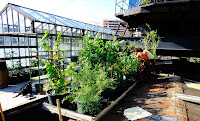These
are the days of the Milan Fashion Week, one of the things that has
attracted the attention of Sustainable diary is Carmina Campus, a
collection of handbags, jewels and furniture successfully combining
the idea of ethical fashion and sustainable eco-friendly, with the
great traditional Italian craftsmanship.
The
brand was founded in 2006 by Ilaria Venturini Fendi, who explains
"With Carmina Campus I tried to fashion a new approach,
enriching the body of knowledge derived from my family history with
values such as respect for the environment and the implementation of
work projects aimed at social development"
The
creations included in the collections are under the sign of reuse
and upcycle, as Carbags line, bags made with seat covers, sun
screens, safety belts recovered from car in shambles. Over the years
the collection Carmina Campus made in Italy has been enriched by new
materials. So switches are turned into sparkling Switch Bag and
bottle caps become closures for Pyramid Bag, bags reversible with an
inlay made of small pieces of leather processed in a pyramid. And
then there are the old color charts, which take the form of soft Soft
Bag.
While
the items of the collection 100% made in Africa, successfully making
concrete the philosophy “not charity, just work”. In Kenia
Carmina Campus has given rise to the Ethical Fashion Initiative. The
project has seen the involvement of some employees of craftsmen who
have passed on their know-how to local communities through a process
of training on site. So the brand has launched social projects that
have the objective of training microentrepreneurs, promoting
education and health care. The iniative was born from the
collaboration of Carmina Campus with ITC (International Trade
Centre), an agency of the UN and the World Trade Organization, whose
mission is to provide developing countries opportunities for training
and work.
More
info
website
Carmina Campus
Photo
credit © Carmina Campus




























































